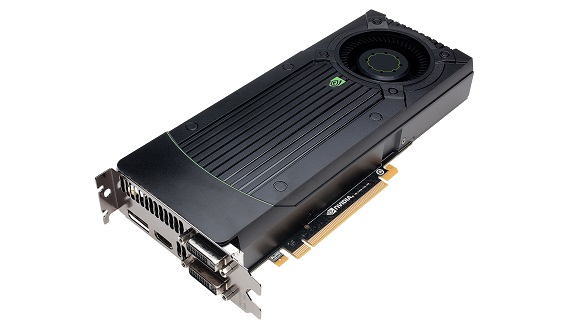GEFORCE GTX 670
A little earlier, two of NVIDIA's most powerful solutions were already released: a single-chip video card of the GeForce GTX 680 model, based on the first graphics processor of the Kepler architecture, and its two-chip counterpart, the GeForce GTX 690 model, which became the fastest video card on the market.

The top single-chip model GeForce GTX 680 is based on the Kepler architecture, the operating frequency of the GPU using GPU Boost technology reaches 1058 MHz and higher. As a result, the GeForce GTX 680 has become NVIDIA's fastest single-chip model. Recall that when designing solutions for the Kepler family, the main task was maximum energy efficiency. The 28 nm process also played a major role in reducing power requirements, but the efficiency of the new GPUs was further affected by significant architectural changes in Kepler - many of the execution units of the new GPU were completely redesigned.
NVIDIA introduces the third graphics card based on the first chip of the Kepler architecture, the GeForce GTX 670. As the name implies, this is the successor to the GeForce GTX 470 and GTX 570 graphics cards, but based on a new architecture GPU that is more powerful and energy efficient.
The GeForce GTX 670 is designed for those gamers who plan to run the most demanding 3D applications at maximum settings, high resolutions, and FSAA enabled. Those who want to get all the functionality of the older GTX 680 graphics card, but at a lower price. The GeForce GTX 670 is based on exactly the same GK104 video chip as the older model, and has 2 gigabytes of GDDR5 memory running at the same frequencies as the video memory on the GeForce GTX 680.
This is absolutely the right decision, since the amount and bandwidth of memory are the most important factors limiting the performance of the top model. The new GeForce GTX 670 delivers excellent performance in the lower class, where AMD's Radeon HD 7950 currently sits. It is for this price category that the presented model is intended.
Since the released GeForce GTX 670 video card is based on the Kepler architecture GPU, already known to us under the code name GK104, there is nothing special to paint in this section - everything has already been described in great detail earlier. In this article, we will only dwell on the differences and repeat the basic information.
The foundations of the Kepler architecture were laid down in the Fermi family of chips released a couple of years ago (GeForce GTX 480 and then GTX 580), but despite the similarities, Kepler is still an almost completely redesigned architecture, the main task of which was to increase energy efficiency. Installed on the GeForce GTX 670, the GK104 GPU consists of four Graphics Processing Clusters, and differs from the GTX 680 GPU only in the number of active blocks.
To ensure high enough performance to successfully compete with AMD accelerators, the GeForce GTX 670 decided to use the GK104 graphics processor with one of the eight SMX multiprocessors disabled. That is, one of the SMX blocks in the chip is disabled by hardware, and the GTX 670 offers the power of 1344 CUDA computing cores, assembled into 7 multiprocessors.
The base clock speed of the chip in the GeForce GTX 670 is 915 MHz, which is 10% lower than the top-end GTX 680. But the average GPU Boost frequency is 980 MHz, which is only 8% less. Recall that GPU Boost allows Kepler architecture GPUs to automatically increase the GPU frequency to achieve the highest possible performance. You can read about this technology in detail in the GeForce GTX 680 basic review. The actual GK104 turbo frequency in the case of the GTX 670 depends on the specific 3D application, and most often is even higher than 1 GHz.
| Specifications NVIDIA GeForce GTX 670 |
|



